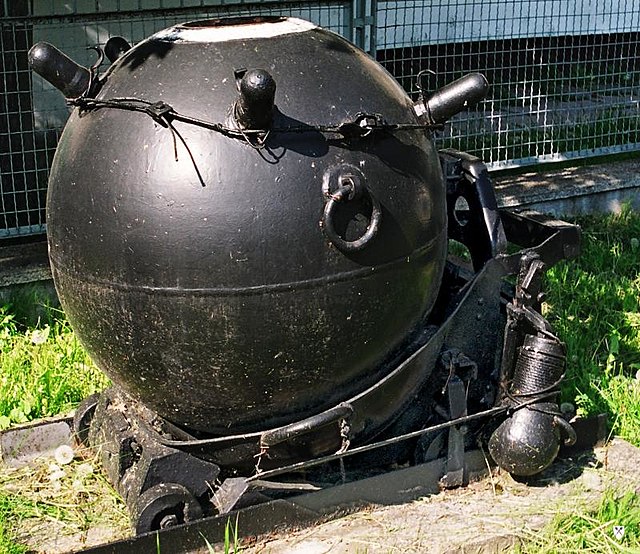A minelayer is any warship, submarine, military aircraft or land vehicle deploying explosive mines. Since World War I the term "minelayer" refers specifically to a naval ship used for deploying naval mines. "Mine planting" was the term for installing controlled mines at predetermined positions in connection with coastal fortifications or harbor approaches that would be detonated by shore control when a ship was fixed as being within the mine's effective range.
Canadian sailors with a mine aboard the minelayer HMCS Sankaty off Halifax, Nova Scotia in World War II.
Amiral Murgescu of the Romanian Navy, a successful World War II minelayer that was also employed as a destroyer escort
Swedish minelayer Älvsborg (1974)
Finnish Navy Hämeenmaa-class minelayer FNS Uusimaa
A naval mine is a self-contained explosive device placed in water to damage or destroy surface ships or submarines. Unlike depth charges, mines are deposited and left to wait until they are triggered by the approach of, or contact with, any vessel or a particular vessel type, akin to anti-infantry or anti-vehicle mines. Naval mines can be used offensively, to hamper enemy shipping movements or lock vessels into a harbour; or defensively, to protect friendly vessels and create "safe" zones. Mines allow the minelaying force commander to concentrate warships or defensive assets in mine-free areas giving the adversary three choices: undertake an expensive and time-consuming minesweeping effort, accept the casualties of challenging the minefield, or use the unmined waters where the greatest concentration of enemy firepower will be encountered.

Polish wz. 08/39 contact mine. The protuberances near the top of the mine, here with their protective covers, are called Hertz horns, and these trigger the mine's detonation when a ship bumps into them.
British Mk 14 sea mine
A 14th-century illustration of a naval mine and page description from the Huolongjing
David Bushnell's mines destroying a British ship in 1777








